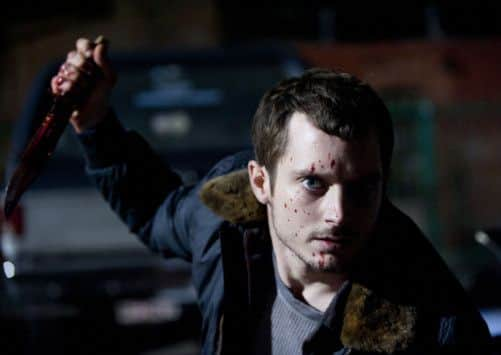How to remake a cult 80s horror movie


Remaking a film is one thing.
Attempting to outdo the original is something else entirely, especially when said original was one of the most vilified of the ’80s video nasties.
William Lustig’s Maniac starred Godfather actor Joe Spinell as a roving nocturnal murderer who scalped his victims and dressed mannequins with the results.


Advertisement
Hide AdAdvertisement
Hide AdVariously condemned as “sleazy” and “execrable” over the years it nonetheless acquired a considerable cult reputation, not least for the effects, courtesy of Tom Savini, that gave the picture its undeniable visceral power.
Long condemned as a film that wallowed in misogyny Maniac inevitably fell foul of the censor. As recently as 2001 the British Board of Film Classification cut 58 seconds from a DVD release, reducing a sexual strangulation scene and removing “shots of a knife played over and stabbing into female flesh with sexual connotations”.
So it comes as a surprise to discover that the director behind the remake, which prides itself on wearing the aesthetic of the original like a mantle, is not just another MTV generation airhead horror junkie with a penchant for lazy shocks.
Franck Khalfoun took seriously the challenge of updating and evolving this benchmark of the slasher genre. Far from trotting out a trashy rehash he opted for a more considered approach. What’s more, he knew his audience.
Advertisement
Hide AdAdvertisement
Hide Ad“I was reluctant,” admits Khalfoun when recalling the offer to re-imagine Maniac for the 21st century.
“I was very clear that we come up with some concept that was different. I knew how badly remakes get panned and [are] hated by the core audience.
“I was willing to give them a movie that stood on its own. We didn’t make a movie for the sake of milking a brand. We actually came up with a film that could be appreciated.”
The shock factor at the heart of the original film was the violence and gore.
Advertisement
Hide AdAdvertisement
Hide AdIn the remake it was violence, gore… and Elijah Wood replacing the late Joe Spinell as killer Frank Zito.
Khalfoun admits that when Wood first showed interest in the project “it didn’t seem like it would work … then we saw the total benefit”. Khalfoun struggled with the love story element of the first film – Frank falls for a fashion model – because “this guy was such a horrific and awkward [individual]”. The twist in the remake is what he describes as “Elijah’s boyish charm and kind eyes”.
“I think it’s the first time I’ve worked with an actor where I’ve felt the baggage could work to our advantage,” muses Khalfoun.
“In most of his movies – and he has played some tough parts – he is loved as the heroic and kind and fair character. That’s the baggage he came with.
Advertisement
Hide AdAdvertisement
Hide Ad“I thought how much fun that would be for me to break that – turning this kind character into an evil monster. It was very interesting to play it in this very disarming and charming manner and soft-spoken way.
“It really benefited us and it was really truly terrifying. Somebody came out of the movie one day and said he kinda felt he’d seen his puppy get run over. I thought that was a great quote.”
A devotee of horror films, Wood embraced its central gimmick: the film is viewed from the point of view of Frank. Says Khalfoun: “Moviemaking is about feeling empathy for your character. And if you don’t see the character [then] that’s a real challenge. I was able to trap an audience into this man’s existence – the inability to stop himself, which is his disease. I didn’t need the trickery that you see in horror films. It was a completely different technique to horrifying and scaring people.”
Times have changed since the Eighties. What was previously cause for outrage has now become accepted – even commonplace. Once notorious titles such as A Clockwork Orange and Last House on the Left have been released on DVD to new audiences. Even I Spit on Your Grave, arguably the ultimate ’80s video nasty, has been remade. Maniac has an eye on the past. Old movies might be ‘cult’ but appropriating that retro style might actually cause offence. Are modern audiences ready for a return trip to the bad old days?
Advertisement
Hide AdAdvertisement
Hide Ad“Horror for me should remain visceral and heartfelt,” argues Khalfoun.
“That’s what I wanted out of this one. People go ‘Oh, it’s super gory and violent’ but it’s not as gory as the majority of the horror films that are out there. I think it’s the fact that it’s so visceral and you’re so close to it and it’s so serious that perhaps it seemed that way. A few females have used the word ‘misogynist’ but for the most part I’m certainly not trying to glorify the violence. This movie, in a way, went back to the origins of horror and to me Peeping Tom is one of those great films that started it all.
“It made me feel good that this movie might be mentioned in the same sentence.”
Maniac (18) is on general release.
Background to a ‘video nasty’
Maniac was one of a number of movies in the 1980s that fell foul of censors.
Advertisement
Hide AdAdvertisement
Hide AdEven before it was made – many scenes had to be filmed guerrilla-style because the production could not afford city permits. The infamous shotgun sequence was one of them; it was filmed in just an hour.
The film is unrated because it was not submitted to the MPAA. The poster stated that “No One Under 17 Will Be Admitted”, a practice cinemas used for extremely violent unrated films.
Film critic Gene Siskel vociferously described how sickened he was by the film, walking out after 30 mins.